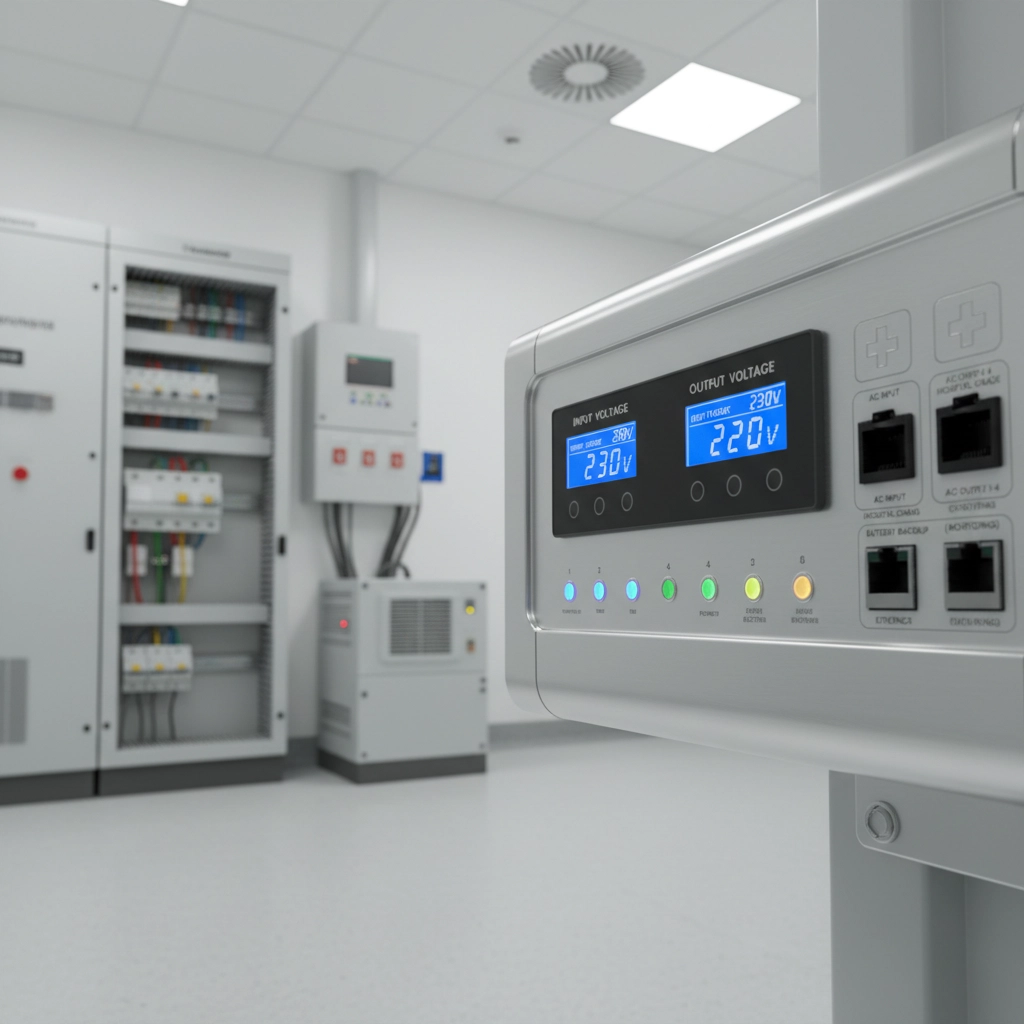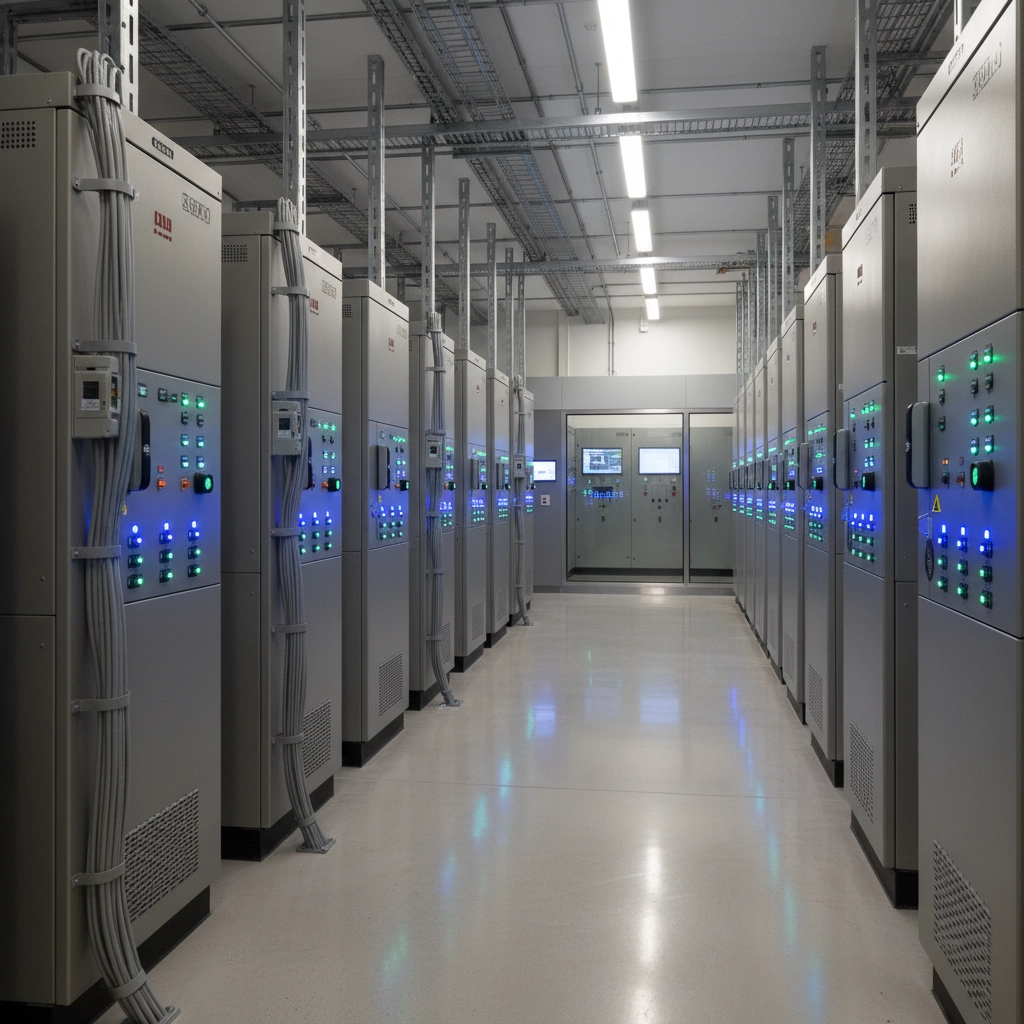
Clean Power for Healthcare: How Voltage Regulation Protects Critical Equipment
Share
When you're running a healthcare facility, every piece of equipment needs to work perfectly, every time. There's no room for error when lives are on the line. That's where voltage regulation comes in – it's the invisible guardian protecting your critical medical equipment from power problems that could spell disaster.
Think about it: modern hospitals are packed with sophisticated electronics that cost hundreds of thousands of dollars. MRI machines, ventilators, patient monitors – they all depend on clean, stable power to function properly. Without proper voltage regulation, you're essentially gambling with both equipment and patient safety.
Why Medical Equipment Is So Sensitive to Power Problems
Medical devices aren't like your home appliances that can handle a little voltage fluctuation here and there. These machines are precision instruments built with advanced embedded systems that need voltage accuracy down to decimal points.
Here's what makes medical equipment so vulnerable:
Ultra-sensitive electronics: Modern diagnostic equipment uses microprocessors and digital circuits that can crash or malfunction with even minor voltage variations. A CT scanner processing images or an ECG machine recording heart rhythms can't afford to have corrupted data.
Continuous operation requirements: Unlike office equipment that gets turned on and off, medical devices often run 24/7. This constant operation means they're exposed to every power fluctuation that comes through your electrical system.
Safety-critical functions: When equipment like ventilators or defibrillators fails, people's lives are immediately at risk. There's no "try turning it off and on again" when someone's heart stops beating.

Equipment That Absolutely Needs Voltage Protection
Let's talk about the specific equipment in your facility that can't survive without proper voltage regulation:
Imaging Equipment: MRI scanners, CT machines, and X-ray systems require massive amounts of stable power to generate clear diagnostic images. A voltage spike can not only damage these million-dollar machines but also corrupt scan data, forcing patients to undergo additional radiation exposure.
Life Support Systems: Ventilators, heart-lung machines, and dialysis equipment literally keep patients alive. Even a momentary power fluctuation could interrupt treatment or damage internal components that take weeks to replace.
Patient Monitoring Systems: Heart monitors, pulse oximeters, and blood pressure machines need consistent voltage to provide accurate readings. False alarms from power-induced errors can desensitize staff to real emergencies.
Laboratory Equipment: Automated analyzers, centrifuges, and refrigeration systems for samples and medications require stable power to maintain precise temperatures and operate correctly.
Surgical Equipment: Operating room devices like electrocautery units, surgical lasers, and robotic surgical systems need clean power for precise control and patient safety during procedures.
The Real Costs of Power Problems
When voltage regulation fails in healthcare settings, the consequences extend far beyond inconvenience:
Equipment Damage: Power surges can instantly destroy sensitive electronic components. A single lightning strike or utility switching event could knock out equipment worth millions of dollars. Repair costs are often astronomical, and replacement parts for medical equipment can take months to obtain.
Patient Safety Risks: Unstable power can cause medical devices to malfunction at critical moments. Imagine an infusion pump delivering incorrect medication doses due to voltage fluctuations, or a ventilator suddenly stopping during surgery.
Operational Downtime: When critical equipment goes down, entire departments can be forced to shut down or transfer patients elsewhere. This creates cascading problems throughout your facility and can impact your reputation in the community.
Data Loss: Electronic health records, diagnostic images, and patient monitoring data can all be corrupted by power problems. Lost data means repeated tests, delayed diagnoses, and potential liability issues.

How Voltage Regulation Actually Works
Voltage regulators act as a buffer between your facility's electrical supply and your sensitive medical equipment. Here's how they provide protection:
Automatic Voltage Regulation (AVR): These systems continuously monitor incoming voltage and automatically adjust output to maintain a steady 120V (or whatever your equipment requires). When voltage dips or spikes, the AVR compensates instantly – often within milliseconds.
Power Conditioning: Beyond just regulating voltage, modern systems also filter out electrical noise, harmonics, and other power quality issues that can interfere with sensitive electronics.
Surge Protection: Integrated surge suppression protects against voltage spikes from lightning strikes, switching events, or other electrical disturbances.
Battery Backup Integration: Many medical-grade voltage regulators include uninterruptible power supply (UPS) functionality, providing seamless backup power during outages.
Choosing the Right Voltage Regulation Solution
Not all voltage regulators are created equal, especially when it comes to medical applications. Medical-grade power protection equipment must meet strict safety standards like IEC 60601, which requires multiple layers of protection for patient safety.
Companies like Vertiv specialize in healthcare power protection solutions that go beyond basic voltage regulation. Their systems are designed specifically for medical environments, with features like:
- Medical-grade isolation transformers for patient safety
- Redundant protection systems that continue operating even if one component fails
- Remote monitoring capabilities that alert you to power problems before they cause equipment damage
- Compliance with healthcare electrical codes and regulations

Installation and Maintenance Considerations
Implementing voltage regulation in healthcare facilities requires careful planning:
Load Assessment: You need to calculate the total power requirements of all connected equipment to size your voltage regulation system properly. Undersized systems won't provide adequate protection, while oversized systems waste money and space.
Redundancy Planning: Critical areas like operating rooms and ICUs should have redundant voltage regulation systems. If your primary system fails, backup protection keeps equipment running.
Regular Testing: Medical voltage regulators should be tested regularly to ensure they're working properly. Many healthcare facilities schedule monthly or quarterly tests of their power protection systems.
Staff Training: Your maintenance and clinical staff should understand how voltage regulation systems work and know how to respond when alarms indicate power problems.
Meeting Healthcare Power Quality Standards
Healthcare facilities must comply with strict electrical standards that go beyond typical commercial buildings. The National Electrical Code (NEC) Article 517 specifically addresses healthcare facilities and requires special grounding, isolation, and power quality measures.
Key requirements include:
- Isolated power systems in critical care areas
- Equipment grounding that prevents electrical shock hazards
- Emergency power systems with automatic transfer switches
- Power quality monitoring and recording systems
Voltage regulation systems for healthcare must integrate seamlessly with these requirements while providing the additional protection that sensitive medical equipment demands.
The Bottom Line on Healthcare Power Protection
Clean power isn't just about keeping the lights on in healthcare facilities – it's about maintaining the precision and reliability that modern medical care depends on. When you invest in proper voltage regulation, you're protecting more than just equipment. You're protecting your patients, your staff, and your facility's ability to provide life-saving care.
The cost of comprehensive voltage regulation might seem significant upfront, but it's nothing compared to the potential costs of equipment failure, patient safety incidents, or operational disruptions. In healthcare, reliable power isn't a luxury – it's an absolute necessity.
Ready to assess your facility's voltage regulation needs? Our team at Ace Real Time Solutions specializes in healthcare power protection solutions. We can evaluate your current setup, identify vulnerabilities, and design a comprehensive voltage regulation system that keeps your critical equipment running smoothly. Contact us today to schedule a consultation and protect your facility's most important assets.
